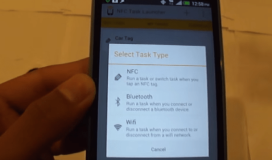In my opinion column this week, A Question of Life or Death for RFID Companies, I wrote that I often ask RFID providers, "Would you rather be in a room with 10 people who have expressed an interest in your product, or with 1, 000 people who have not? "
I do believe companies need to understand why it's better to be in a room with 10 businesspeople who have expressed an interest in an RFID solution rather than with 1, 000 who haven't. So let me share a personal anecdote that might make this a little clearer.
Two years ago, I was approached by a salesperson who suggested we move our website to the cloud, rather than using dedicated hosting. He said we could save money, offer faster loading for our readers and have uninterrupted uptime. After doing my homework, I decided to make the move, and we switched to a cloud-based approach. It saved us money, improved the speed of RFIDJournal.com and increased our uptime.
Around the same time, I was approached by another company's representative, who suggested we integrate our registration system with social-media sites to allow people to register for events via their interface to Facebook and other social-media sites. He said we could increase registrations by 30 percent, which is what their other customers were seeing. I did some research and decided not to invest.
In the first scenario, someone was selling me a solution that was very similar to the one I already had in place, except it offered cost savings and other advantages. I went for it. In the second case, I was being offered a new solution that we didn't already use and that was still relatively unproven (like RFID).
My point is that it is far easier to sell a company a solution similar to one that they are already using but is better or cheaper. In that case, you would opt to be in a room with 1, 000 people who have not expressed an interest in your product, because you are likely to succeed in convincing some portion of those you meet that your solution is better than the one they are currently using.
But RFID is, in most cases, a new solution that does things the company cannot do today. Business executives who have not expressed an interest in a solution (or who have a mild interest in it, as I did with the social-media solution) are unlikely to invest. They will wait until more companies prove the system works.
You don't need to take my word for it. You can read Geoffrey Moore's Crossing the Chasm, and you can look around. If RFID companies were able to go to vertical industry events and succeed in convincing those who are not interested in RFID to buy a solution, then we would see far fewer RFID solution providers going out of business and far more companies using the technology.
One last point on this: It will change. When RFID technology is more widely adopted and the benefits become more widely understood, then it will become easier to convince those not using it to try it. Adoption in the apparel retail sector is nearing the tipping point. Vendors can speed up the process by focusing on end users that are actively searching for solutions, converting them into users and building a critical mass of RFID users.



